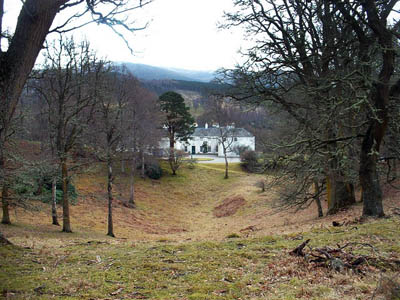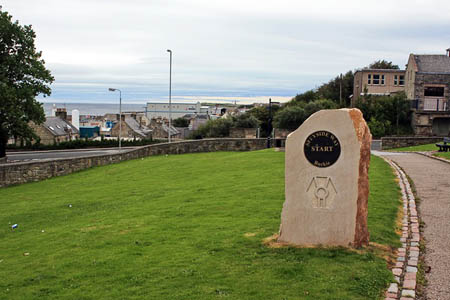Scotland’s environment minister confirmed the first ever compulsory path order today to force an estate to allow an extension of the Speyside Way across its land.
Authorities and the Kinrara Estate, south of Aviemore, had been deadlocked on a route for the section of the long-distance path that crosses the grounds.
Two rounds of extensive public consultation in 2005 and 2007 over a variety of options resulted in a route for the extension being proposed by Scottish Natural Heritage and approved in principle by Scottish ministers in May 2009.
The Cairngorms National Park Authority, which has responsibility for the project in its area, agreed most of the route by cooperation with land managers, but Kinrara Estate continued to have fundamental objections about the route which prompted the authority to use its formal powers to place Scotland’s first ever path order on the land to secure the line of the path.
The estate objected and a reporter was appointed to hear the arguments for and against the chosen route. The hearing and a site visit took place in August last year.
Environment minister Stewart Stevenson confirmed the path order today.
Cattie Anderson, operations officer with SNH said: “Long-distance routes promote health and wellbeing and allow Scotland’s people to maintain an interest in our landscapes and species.
“They also provide social and economic benefits for communities. We worked with partners to put forward the proposed route for consideration by Scottish ministers as there was clearly demand from local communities for the Speyside Way extension.”
The Ramblers welcomed the news but called for a review of the process which, they said, had taken three years. David Thomson, convener of Ramblers Scotland, said: “We are delighted that Stewart Stevenson has now removed the final blockage to completion of the Speyside Way between Aviemore and Newtonmore.
“In approving the path order across Kinrara Estate ground the Scottish Government has sent out a clear message to all landowners: the public interest will always prevail against the unreasonable attitudes of private landowners who try to prevent new path development.
“Private kingdoms belong to the past. Public enjoyment of the outdoors must be at the heart of Scotland’s future and those who use unreasonable arguments about disturbance to wildlife, sport shooting or farming activities will receive no sympathy.
“The new paths are going in and landowners need to wake up to reality.”
He praised the national park authority for its tenacity. “It is significant that Kinrara Estate was the final barrier to completing the Speyside Way,” Mr Thomson said.
“It is a great compliment to the park authority and the landowners along the whole of the rest of the route that patient negotiation and compromise have succeeded without recourse to the use of a path order.
“Equally important, however, is the vigour and diligence with which the park authority have dealt with Kinrara Estate. Their robust attitude to this estate is a model which should be followed by other access authorities in Scotland.”
But the Ramblers’ convenor added: “The Scottish Government approved the proposed route of the final section of the Speyside Way over three years ago. Surely we can have a speedier process in dealing with obstructive landowners like Kinrara than the present path order mechanism?
“We will examine the Scottish Government’s forthcoming review of the land reform legislation to see if improved mechanisms can be put in place to ensure that path orders can be used more often and more quickly in all parts of Scotland, where needed.”
David Green, convenor of the national park authority, said: “The CNPA has long recognised the desire from communities along the length of the extension to have the Speyside Way carry on to Newtonmore, so this is fantastic news.
“The minister has clearly weighed up all the arguments put forward and has seen the benefits that this new route will bring.
“We rely on a great deal of cooperation from land managers to help people enjoy the park. We only use our formal powers as a matter of last resort.
“This is the first time such powers have been used and confirmed by Ministers in Scotland. I hope that we can all now put this chapter in the process behind us and move forward. The hard work will now continue as planning permission is still required and finding funding to implement this project will be challenging.”
Kinrara was designed in the 18th century by the Duchess of Gordon as part of a settlement by the duchess against her unfaithful husband, the 23rd Duke. It subsequently came into the ownership of former chorus-girl and later suffragette Lady Lucy Houston who hosted society parties. She was a notorious supporter of Mussolini.
Kinrara House and the 445ha (1,100 acres) of land surrounding it are owned by the Clouds Estate.
The path order is the first under the Land Reform (Scotland) Act that was passed in 2003.

